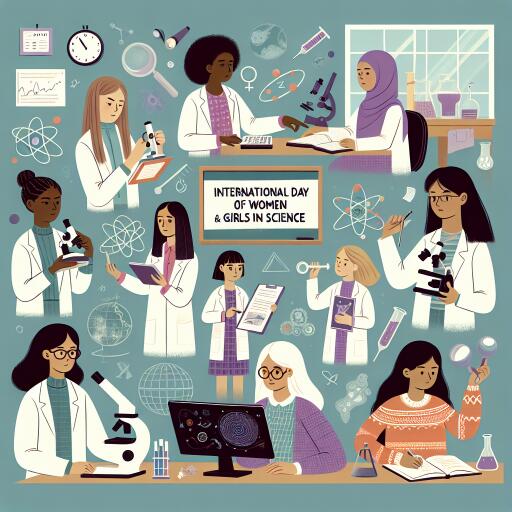A Celebration of Women and Girls in Science
In a significant move towards gender equality in science and technology, the United Nations General Assembly, in December 2015, proclaimed February 11th as the International Day of Women and Girls in Science. This recognition highlights the collaborative efforts of UNESCO and UN Women to encourage equal participation and access for women and girls in the science field.
The focus of this day centers around acknowledging the gap present in the STEM fields (Science, Technology, Engineering, and Mathematics), where women and girls continue to be underrepresented. Despite making up half the world’s population, they only account for a third of the global research community and 35% of the STEM student body. Achieving research parity remains a distant goal, with only 30% of countries accomplishing this feat as of 2016.
History is peppered with female pioneers who have carved their names in the annals of science and technology, making significant contributions despite the gender disparities. Remarkably, Ada Lovelace, born Augusta Ada Byron, is celebrated as the first female computer programmer. Her work laid the foundational concepts for the first algorithm intended for machine processing, heralding the dawn of computing.
Another towering figure is Marie Curie, a Polish scientist based in France, known for her groundbreaking work in radioactivity. Curie’s achievements are legendary, marking her as the first woman to be honored with a Nobel Prize, and uniquely, the first individual to win it twice. Her legacy is further immortalized as she remains the sole woman to have achieved this distinction in over a century. Curie’s final rest in Paris’s Pantheon as the first woman to be accorded this honor speaks volumes of her monumental contributions.
Hedy Lamarr, an actress turned inventor, broke stereotypes by contributing to the development of spread spectrum technologies. This innovation laid the groundwork for vital modern-day technologies such as Bluetooth, GPS, and Wi-Fi, illustrating the multifaceted talents women bring to the sciences.
Rosalind Franklin’s expertise in X-ray crystallography allowed her to capture DNA’s structure, a contribution that was pivotal for understanding the molecular structure of DNA. Despite the controversy surrounding the recognition of her work, Franklin’s contributions remain invaluable to science.
From Spain, Margarita Salas made remarkable strides with her discovery of the DNA polymerase of the bacteriophage Phi29 virus. This breakthrough has profound applications across several fields, including forensic medicine and archaeology, showcasing the significant impacts of women’s discoveries in science.
Beyond individual stories, initiatives such as Telefónica’s #GirlsLoveTech and Lady Hacker, prioritize the mentoring and encouragement of young girls interested in STEM fields. These programs aim to provide role models and bridge the gap between young female students and the opportunities within the tech and science sectors.
While February 11th stands out as a day to celebrate and advocate for women and girls in science, it’s also a reminder of the broader objectives like World Science Day. Celebrated every November 10th, this day emphasizes science as a key player in eradicating poverty and fostering peace and development, underscoring the role of science in society.
The journey towards equality in science and technology is ongoing. Celebrating the International Day of Women and Girls in Science not only honors the trailblazers of the past and present but also shines a beacon towards a more inclusive future where science and innovation flourish, free from gender biases.










